Explore Calaveras Big Tree State Park
Calaveras Big Trees State Park is a stunning natural wonder located in the Sierra Nevada Mountains of California. The park is home to some of the largest and oldest trees in the world, including the famous Giant Sequoias, which can reach heights of up to 300 feet and have been known to live for thousands of years. Visitors to Calaveras Big Trees State Park can explore the park’s many hiking trails, witness its incredible natural beauty, and learn about the history and ecology of this unique environment.
The park is divided into two main areas: the North Grove and the South Grove. The North Grove is the more popular of the two and features a self-guided tour of the park’s giant sequoias. Visitors can walk through the park and admire the giant trees, which are some of the largest living organisms on the planet. The South Grove, on the other hand, is a more remote area that offers a more secluded and peaceful experience. It features a number of hiking trails that wind through the park’s stunning landscapes, providing visitors with a chance to explore the natural beauty of the park.
In addition to its hiking trails and giant sequoias, Calaveras Big Trees State Park is also home to a visitor center that provides information about the park’s history and ecology. The center features exhibits and displays that highlight the unique features of the park, including its diverse plant and animal life.
Overall, Calaveras Big Trees State Park is a truly awe-inspiring destination that offers visitors a chance to witness the majesty of nature up close. Whether you’re a nature enthusiast or just looking for a peaceful escape, Calaveras Big Trees State Park is definitely worth a visit.
Historical Timeline of Calaveras Big tree State Park
- 1800s: The area that is now Calaveras Big Trees State Park was home to several Native American tribes, including the Miwok, Washoe, and Yokut.
- 1852: A hunter named Augustus T. Dowd discovers the giant sequoia trees in the park and brings attention to the area.
- 1853: The first tourist excursion to the grove is led by a guide named Harry A. Crocker.
- 1854: The land is purchased by a group of businessmen and turned into a tourist attraction.
- 1861: The giant sequoia named “Discovery Tree” is felled so that its cross-section can be displayed at the New York Crystal Palace exhibition.
- 1864: President Abraham Lincoln signs legislation granting Yosemite Valley and the Mariposa Grove of giant sequoias to the state of California “for public use, resort, and recreation.”
- 1931: The state of California purchases the land that is now Calaveras Big Trees State Park, with the help of the Save the Redwoods League.
- 1935: The park is established and opened to the public.
- 1954: A wildfire burns over 5,000 acres in and around the park, destroying several historic structures and causing significant damage to the forest.
- 2007: A windstorm knocks down several of the park’s iconic sequoia trees, including the “Pioneer Cabin Tree,” which had a tunnel cut through its base in the 1880s to allow tourists to walk through.
- Present day: Calaveras Big Trees State Park continues to be a popular destination for visitors to see and learn about the giant sequoias and the natural and cultural history of the area.
There have been several notable visitors to Calaveras Big Trees State Park over the years. Here are a few examples:
- John Muir: The famous naturalist and conservationist visited the park in the late 1800s and wrote about the giant sequoias in his book “Our National Parks.”
- Theodore Roosevelt: The 26th President of the United States visited the park in 1903 and gave a speech in honor of the giant sequoias.
- Ansel Adams: The renowned photographer visited the park in the 1930s and took several iconic photos of the giant sequoias and surrounding landscape.
- Walt Disney: The famous animator and founder of Disneyland visited the park in the 1940s and was reportedly inspired by the giant sequoias when designing the “Big Trees” attraction at the theme park.
- Julia Morgan: The celebrated architect, best known for her work on Hearst Castle, designed the visitor center at Calaveras Big Trees State Park in the 1930s.
These individuals and others have helped to elevate the park’s profile and draw attention to the importance of preserving and protecting its natural and cultural resources for future generations to enjoy.
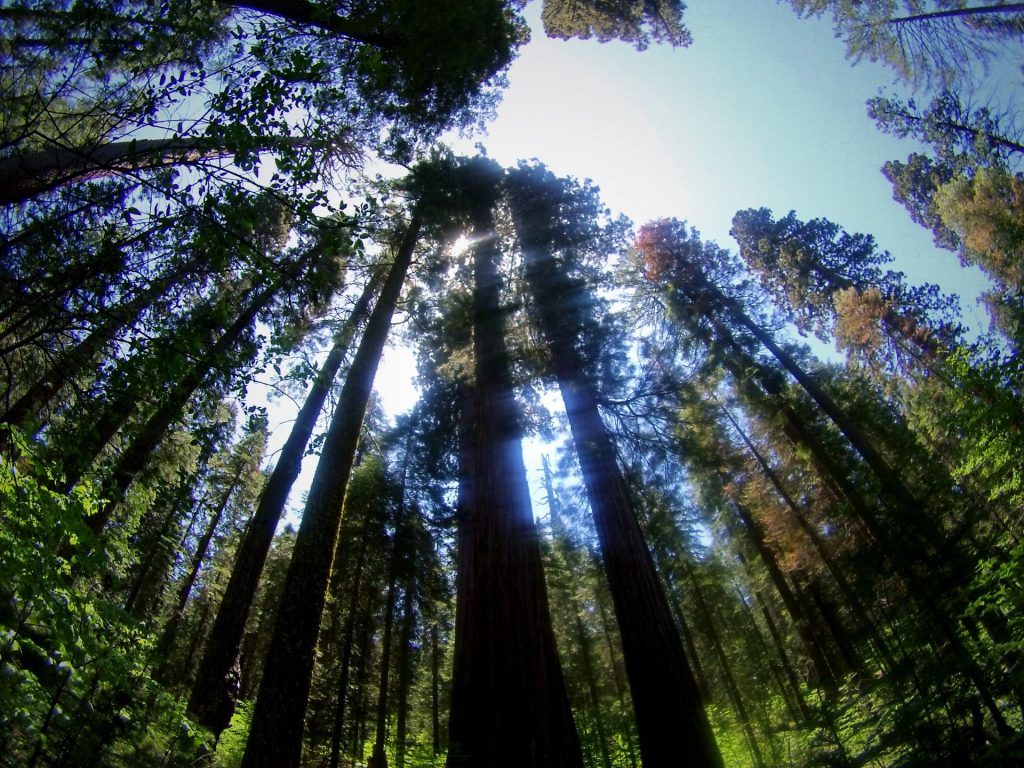
Camping at Calaveras Big Tree State Park
Camping is available at Calaveras Big Trees State Park. There are three campgrounds within the park: North Grove, Oak Hollow, and Beaver Creek.
The North Grove campground is located near the park entrance and is open year-round. It has 76 campsites, including some that can accommodate RVs up to 30 feet in length. The campground has flush toilets, hot showers, and a dump station.
The Oak Hollow campground is located in a more secluded area of the park and is open seasonally (May through September). It has 24 campsites, including some that can accommodate RVs up to 27 feet in length. The campground has vault toilets and no showers.
The Beaver Creek campground is also located in a more remote area of the park and is open seasonally (June through September). It has 8 walk-in campsites and is only accessible via a 1.5-mile hike from the nearest parking area. The campground has vault toilets and no showers.
Reservations are recommended for all three campgrounds and can be made up to six months in advance. Campsite fees vary depending on the season and amenities provided.
Hiking
Calaveras Big Trees State Park has a number of hiking trails that offer visitors the opportunity to explore the park’s giant sequoia groves, meadows, and other natural features. Here are a few of the best hiking trails in the park:
North Grove Trail: This 1.5-mile loop trail takes visitors through the heart of the park’s giant sequoia grove, allowing them to get up close to some of the largest trees in the world. Interpretive signs along the trail provide information about the ecology and history of the grove.
South Grove Trail: This longer, more strenuous trail is a 5.5-mile loop that takes visitors through a less-visited area of the park’s giant sequoia grove. Along the way, hikers will pass through scenic meadows and cross several streams.
Lava Bluff Trail: This 2.5-mile trail offers stunning views of the Stanislaus River canyon and the surrounding foothills. The trail climbs up to a rocky bluff where hikers can take in the panoramic vistas.
Bradley Trail: This 3-mile trail leads hikers through a mixed-conifer forest and past several small meadows. Along the way, visitors will have the chance to see a variety of wildlife, including deer and black bears.
Three Senses Trail: This short, wheelchair-accessible trail is designed to engage visitors’ senses of sight, sound, and touch. The trail features interpretive signs, tactile exhibits, and a listening station where visitors can hear the sounds of the forest.
These are just a few of the many hiking trails available at Calaveras Big Trees State Park. Visitors should check with park staff or consult a trail map for more information about the park’s hiking options.
Wildflower Season
While Calaveras Big Trees State Park is primarily known for its giant sequoias and wildflowers, it is also home to a number of other plant species, including azaleas. The park’s understory is composed of a diverse array of shrubs and small trees, many of which produce colorful flowers in the spring and early summer.
The Western Azalea is one of the most spectacular flowering shrubs found in the park. These fragrant white or pink flowers bloom in late spring and early summer and are often found near streams and other wet areas.
Visitors to the park can enjoy the azaleas and other flowering plants along the park’s many hiking trails, including the Bradley Trail and the Lava Bluff Trail. Park rangers and volunteers also offer guided wildflower walks during the spring and early summer, providing visitors with an opportunity to learn more about the park’s flora and fauna.
In addition to the wildflowers, there are several events that take place at Calaveras Big Trees State Park throughout the year:
Big Trees in the Dark: This event takes place in July and August and offers visitors the opportunity to experience the park’s giant sequoias under the stars. Guided night hikes, campfire programs, and telescope viewing are all part of the experience.
Winter Wonderland: During the winter months, the park offers a number of snowshoe hikes and other winter activities. Visitors can rent snowshoes at the park and explore the snowy landscapes around the giant sequoias.
Spring Wildflower Walks: In April and May, park rangers lead guided walks through the park’s wildflower meadows, pointing out the different species and discussing their ecological importance.
Astronomy Nights: During the summer months, the park hosts astronomy nights, where visitors can use telescopes to explore the night sky and learn about the stars and planets.
These are just a few of the events that take place at Calaveras Big Trees State Park throughout the year. Visitors should check the park’s website or contact the park for a current schedule of events.
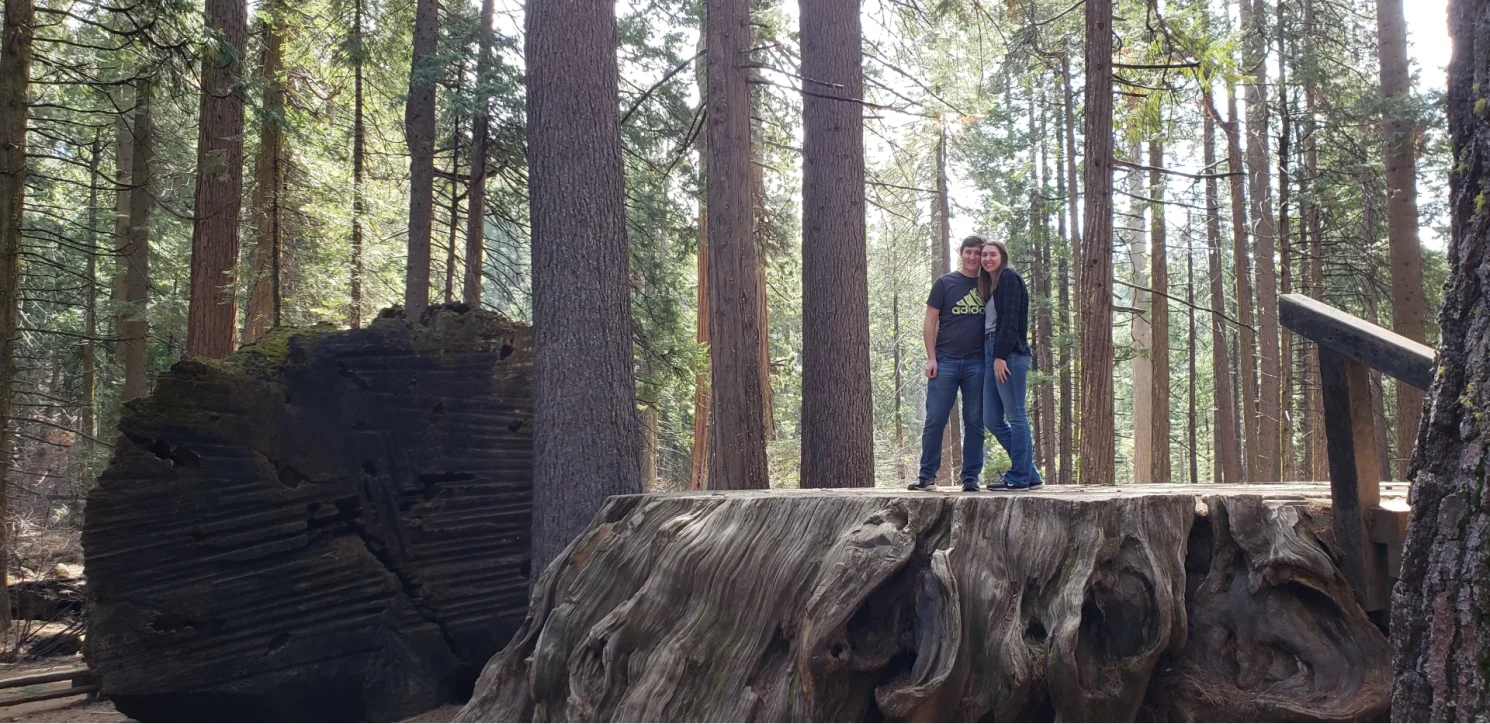
The Discovery Tree
The Discovery Tree, also known as the Big Stump or the Mother of the Forest, is a giant sequoia tree located in Calaveras Big Trees State Park in California. It was discovered in 1852 by a hunter named Augustus T. Dowd, who was in search of a grizzly bear he had wounded.
The discovery of the tree caused a sensation, as it was one of the first giant sequoias seen by non-indigenous people. In the years that followed, the tree became a popular tourist attraction, with visitors coming from all over the world to marvel at its size and beauty. Unfortunately, many of these visitors carved their names and initials into the tree, causing significant damage to its bark and wood.
Over time, concern about the damage caused by human activity led to efforts to protect the giant sequoias, including the establishment of Calaveras Big Trees State Park in 1931. The Discovery Tree was designated as a state monument within the park, and efforts were made to preserve the tree and prevent further damage.
Despite these efforts, the Discovery Tree was eventually felled in 1853, likely to satisfy the public’s demand for souvenirs and mementos. The tree was cut into sections and transported to various locations, where it was put on display or used for other purposes.
Today, the legacy of the Discovery Tree lives on, as it played a significant role in the early efforts to protect the giant sequoias and promote conservation efforts in California and beyond. Visitors to Calaveras Big Trees State Park can still see the stump of the tree, which measures over 24 feet in diameter and provides a powerful reminder of the natural beauty and ecological significance of the giant sequoias.
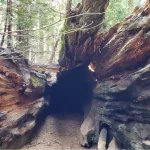
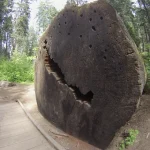
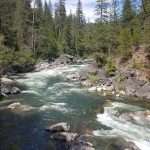
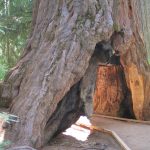
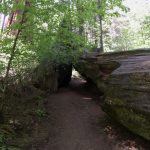
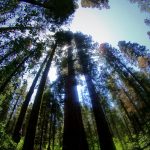
Related Articles
- Fischer Announces new Freestyle ski — Nightstick
- Alpacka Raft Releases Three New Models for 2024
- 33rd Annual Rocky Mountain Oyster Fry returns on Saturday, March 16
- Backpack Through The Wildest Corners Of The Sierra Nevada.
- Experience The Thrill Of Tubing At Woolly’s Tube Park In Mammoth Mountain, California
- A Valentines Treat at Virginia City’s Piper House
- Tahoe Regional Planning Agency Honored with Rosa Parks Award
- Ludacris is Headlining The Stifel Palisades Tahoe Cup








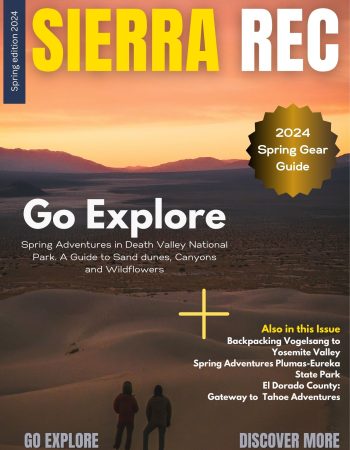
Leave a Reply